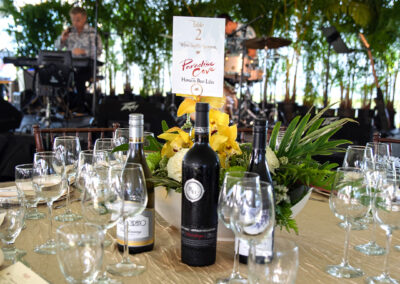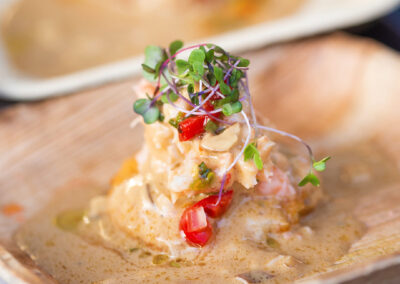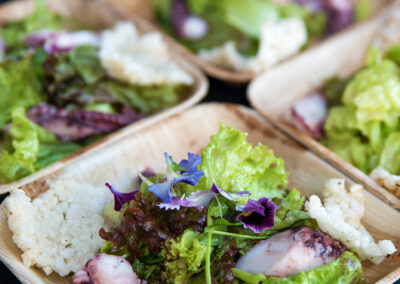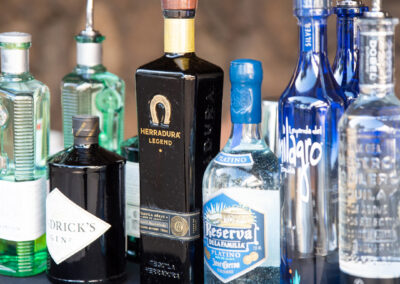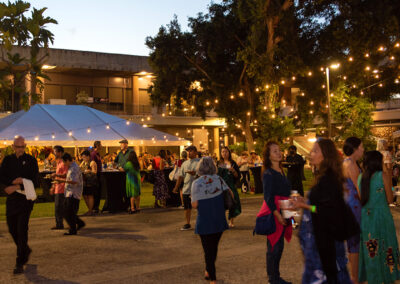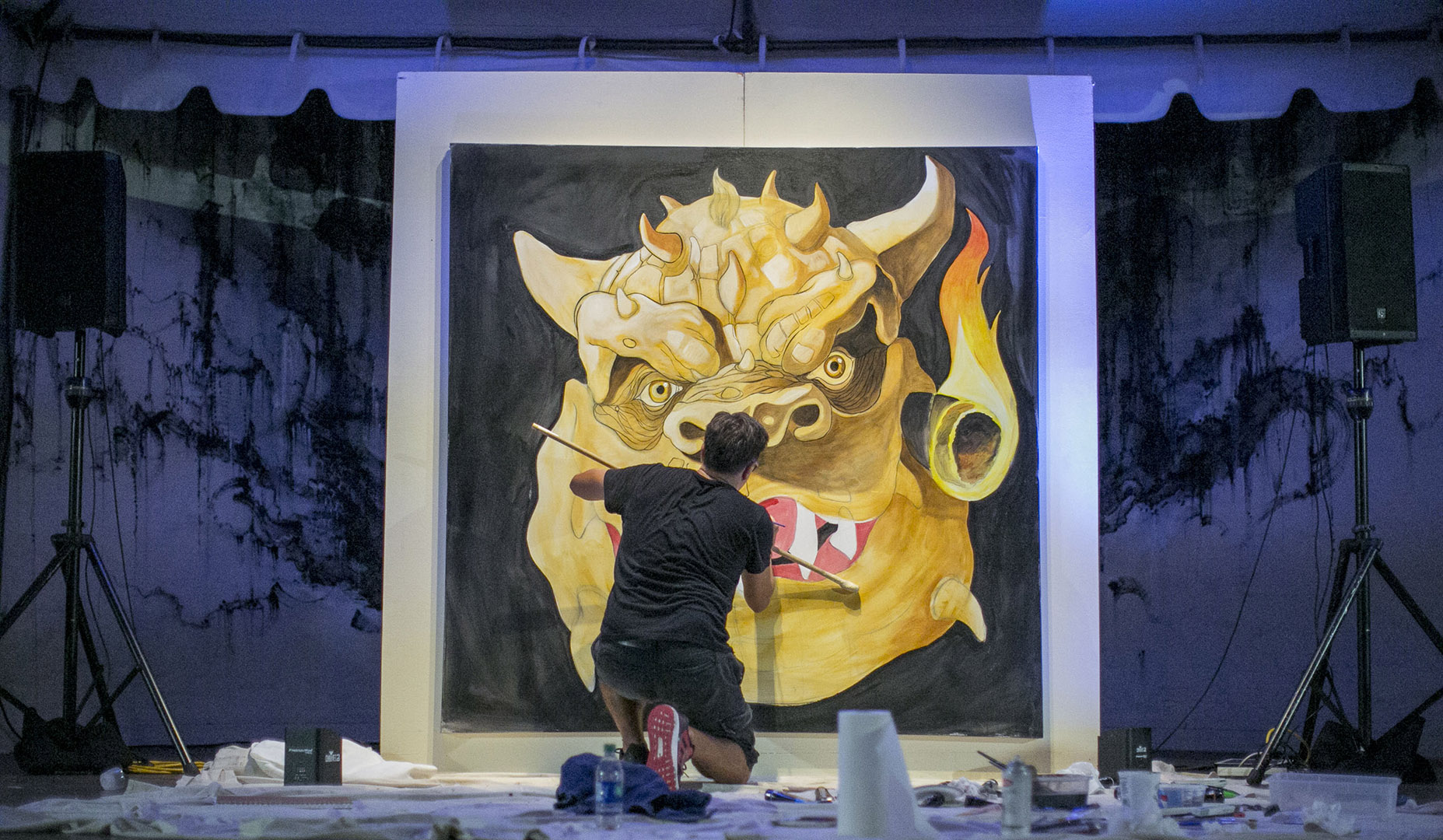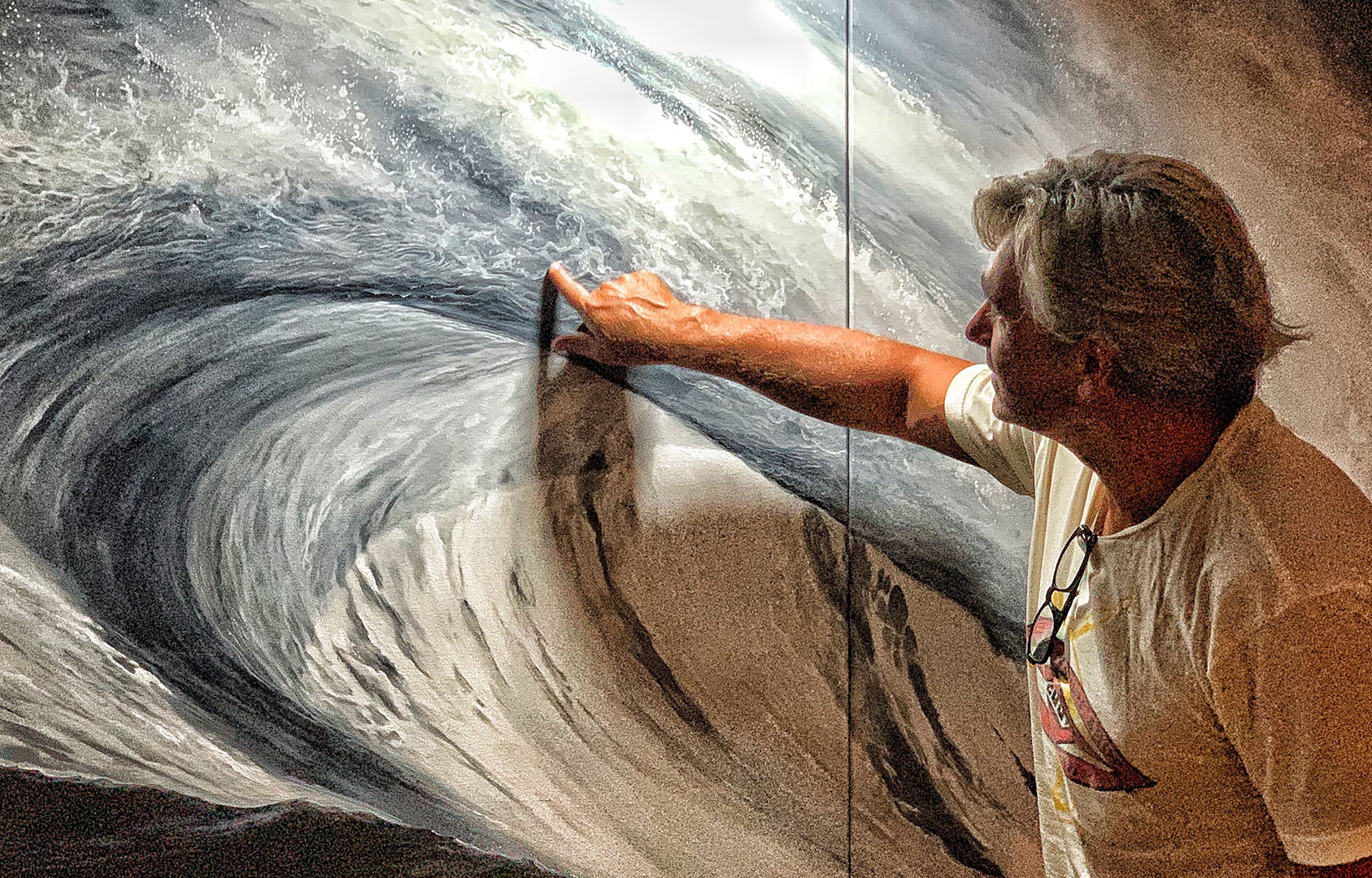
Mahalo to our table sponsors, guests, and donors, Culinary Arts Program faculty, staff, students, and alumni, Leeward CC L’ulu steering committee and volunteers, food and beverage community. Special thanks to culinary students from Campbell, Moanalua, Pearl City and Waipahu high schools, and these generous sponsors:
White Truffle ($10,000 table): Diamond Head Market and Grill, Paradise Cove Lū‘au, Y. Hata & Company
Caviar ($5,000 table): Aloha Shoyu, Aloun Farms, Chris Wong, Dung Family, First Hawaiian Bank, FHB Bankers Club, Hawai‘i Ag & Culinary Alliance, Hawai‘i Foodservice Alliance, HMS Host, Kalaeloa Partners, Kamehameha Schools, Ko Olina Resort, Leeward CC, Nursery Associates, Shizen Consulting, Sysco Hawaii
Saffron ($3,000 table): Gayle Harimoto, Halekulani Corporation, Ikaika Communications, Kelli Brandvold, Marriott Ko Olina Beach Club, Mechanical Enterprises, Mid City Restaurant Supply (2 tables), The SSA Group, Tommy Benavente

Photo courtesy @honoluluprdiva on Instagram
Purchase Tickets
L’ulu is a pivotal community event for LCC’s Culinary Arts Program to support Hawai‘i’s food sustainability initiatives leaders!
You can help support and be a part of this unique culinary experience by becoming a sponsor or by purchasing a general admission ticket.
For information and sponsorship opportunities please contact:
Fabi Castellano: (808) 455-0300, fabiola@hawaii.edu
Don Maruyama: (808) 455-0567, donaldkm@hawaii.edu
If you need an auxiliary aid/service or other accommodation due to a disability, contact Donald Maruyama as soon as possible. Requests made early have a greater likelihood of being fulfilled. Upon request, this notice is available in alternate/accessible formats.
Featured Chefs & Farmers

Chef Reynante Cueco, Aulani, A Disney Resort & Spa
Farmer: Bruner’s Tahitian Vanilla Beans
Tahitian Vanilla Travel Cake (gâteaux de voyage): Brown Butter Madeleine, Whipped Vanilla Ganache, Pineapple Yuzu Jelly, Vanilla Crunch Glaze
Chef Jon Matsubara, Feast by Jon Matsubara
Farmer: Ni‘ihau Wild
Slow Braised Ni‘ihau Lamb, Red Wine Marrow Sauce, Purple Potato, Fines Herbs, Jerez Vinegar
Chef Robynne Maii, Fête
Farmer: Mauka Meats
Lamb Sausage Cavatelli: Hirabara Fennel Soffritto, Preserved Lemon, Green Olives, Parmigiano-Reggiano, Pecorino Romano, Ho Farms Mint.
Chef Shaden Sato, Halekulani Hotel
Farmer: Ho Farms
Poached Shrimp with Tsukemono Pickles, Umeboshi Rice, and Ikura infused with Smoked Tare and Sake
Chef Lance Kosaka, Mariposa
Farmer: Blue Ocean Mariculture
Kona Kanpachi, Tiradito, Aji Amarillo Sauce
Chef Michelle Karr-Ueoka, MW Restaurant
Farmer: Makaha Mangoes
Makaha Mango Cream Pie, Coconut Streusel, Mango Sorbet, Mango Salad, Ho Farms Lime Leaf Pastry Cream
Chef Jason Peel, Nami Kaze
Farmer: Mari’s Gardens
Smoked Taro and Okinawan Spinach Luau, Lomi Tomato, Finger Lime, Chinese-Style Steamed Egg
Chef Darryl Shinogi, Roy’s Ko Olina
Farmer: Honolulu Meat and Ma‘o Farms
Hot Iron Seared Beef Tenderloin Salad, Green Papaya, Fennel, Herbs, Toasted Rice, Ma‘o Citrus Nam Pla
Chef DK Kodama, d.k Steakhouse / Sansei Seafood Restaurant & Sushi Bar
Farmer: Ka Lei Eggs
Filet of Beef Oscar Nigiri, Crabmeat, Asian Bearnaise, Ka Lei Farms Eggs
Chef Lee Alan Dung, The Pearl
Farmer: Pacific Island Fisheries Group
Grilled Island Catch, Shiso and Sweet Onion Relish, Hawaiian Sweet Bread Panzanella, Thai Curry Butter Sauce
Chef Andrew Le, The Pig and the Lady
Farmer: Sumida Farms
Fried Nisshodo Mochi, Sumida Watercress, Steamed Mung Bean, Dried Shrimp Floss, Scallion Oil, Fish Sauce Vinaigrette
Chef Ronnie Nasuti, Tiki’s Grill & Bar
Farmer: Moloka‘i Wildlife
Moloka‘i Venison Bolognese, Moringa Pappardelle, Pecorino Romano
Chef Vikram Garg, UMI
Farmer: Hamakua Farms
Hamakua Mushroom Risotto
Speed Painting at L’ulu
Location: L’ulu main lawn, Diamond Head end fronting Hō‘ikeākea Gallery
L’ulu guests are invited to witness “Speed Painting” – a type of performance art that involves creating a work within a limited amount of time. This innovative concept will be hosted by Leeward CC art faculty, Kosta Kulundzic and the Hō‘ikeākea Gallery.
Kosta and guest artists, Eric Maurus and Mikaila K. Ng, will have 120 minutes to create a work of art using materials of their choice. Their creations will be based upon jazz/music (Kosta) and agriculture/farming/food sustainability (Eric and Mikaila).
The resulting pieces will be available for bidding as part of the evening’s silent auction. Net proceeds will be shared between the Culinary Arts program and Hoikeakea Gallery.

About the Artists

Kosta Kulundzic
Hō‘ikeākea Gallery Coordinator

Eric Maurus

Mikaila K. Ng
Why is it named, “L’ulu”?
Leeward Culinary Arts Program’s annual fundraiser began as “Taste of the Stars” but rebranded as “L’ulu” in 2008. While “L’ulu” is not a Hawaiian word (it contains an apostrophe, not an ‘okina), “‘ulu,” the Hawaiian word for breadfruit, was chosen as the basis for the name because of its significance to Native Hawaiian culture and to Pu‘uloa, the region where Leeward’s main campus is located. In true culinary fashion the program faculty wanted to add a “French flair” and created the name, “L’ulu.”
Besides the ‘ulu trees that grow in the campus’ Eucalyptus Courtyard and the ‘ulu motif that adorns the second floor railings of the buildings, this plant is closely tied to the mo‘olelo (stories) of Pu‘uloa. In one story, Kaha‘i, a great navigator, was known for traveling thousands of miles over open ocean to bring the first ‘ulu sapling from Kahiki to Hawai‘i (to Pu‘uloa), making him responsible for the proliferation of this important crop throughout the Hawaiian archipelago. Another example is a beautiful parable in which the Hawaiian god Kū transforms himself into a breadfruit tree to keep his family and village from starving.”
While ‘ulu is very nutritious, and can be eaten in a variety of ways, kanaka also used every part of this versatile plant, from the trunk to the leaves, for everything from the construction of houses, poi boards, drums, surfboards and canoes, to sandpaper and medicinal products.
Due to these qualities, Hawaiians have long regarded the ‘ulu as a symbol of growth, protection, perseverance, resilience, sustainability and nurturing—the same qualities Leeward Community College exemplifies as an educational institution.
Kosta Kulundzic
Kosta Kulundzic is a French-Serbian artist, born in Paris, who currently resides in Hawai‘i. Working with the representation of Christian saints and mythologies, he transposes biblical stories into contemporary popular culture, employing codes from action movies, graphic novels, and video games. He has participated in over 100 exhibitions around the world, having his work showcased in fifteen countries and more than a dozen international museums, with three monographic books having been published on his work.
In addition to his career as an artist, Kosta has also taught drawing and painting at various art schools and universities in Europe and Hawai‘i since 2005.
He is currently Leeward CCʻs Hō‘ikeākea Gallery Coordinator.
Eric Maurus
French artist Eric Maurus was consumed by drawing and taking things apart at a young age but at age ten, surfing became his subject of predilection. After graduating from the exclusive Academy Julian in Paris, he returned to south France to open his gallery dedicated to surfing art where he explored painting, drawing, sculpting, and building solid redwood hot curls.
His first trip to Hawai‘i, the birthplace of surfing, left a lasting impression on him that prompted a stop in California on his way back to France that resulted in the fulfillment of a childhood dream—mentoring under master surfboard shaper, Donald Takayama.
Eric continued to explore the subtle nuances of oil painting, the difficulty of the encaustic technique, and the purity of line drawing. Today, he divides his time between Guethary and Honolulu where he can be found shaping, sculpting, and painting.
Mikaila K. Ng
Mikaila Ng is a Kānaka Maoli (Native Hawaiian) artist born and raised on the island of O‘ahu in the moku of Waialua. A graduate of Dartmouth College, where she earned degrees in Studio Art, Environmental Science, and Native and Indigenous Studies, her work is rooted in landscapes, exploring themes within Native Hawaiian cosmologies and language to create fractured, liminal dreamscapes reminiscent of her island home.
By revisiting and reimagining significant places through painting, she transforms dreams of an Indigenous future into a new reality. Mikaila’s work ultimately serves to communicate the world as she understands it and how she chooses to reimagine it as a Kānaka Maoli wahine (woman).

